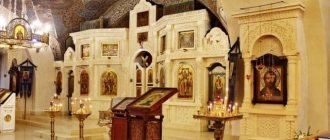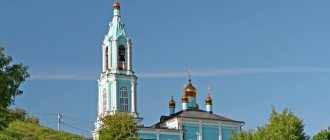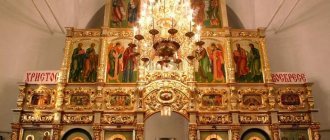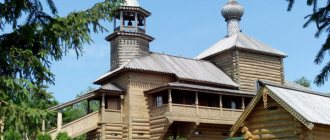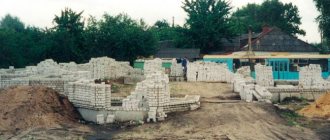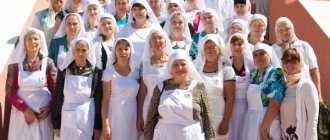Mir
Temple of the Myrrh-Bearing Women (Dmitrievskoye) Map loading in progress...
{"format":"leaflet","minzoom":false,"maxzoom":false,"limit":50,"offset":0,"link":"all","sort":[""], "order":[],"headers":"show","mainlabel":"","intro":"","outro":"","searchlabel":"\u2026 \u0441\u043b\u0435\ u0434\u0443\u044e\u0449\u0438\u0435 \u0440\u0435\u0437\u0443\u043b\u044c\u0442\u0430\u0442\u044b","default":"","import-annotation":false,"width ":"auto","height":"350px","centre":{"text":"","title":"""link":"""lat":58.42707999999999657347871107049286365509033203125,"lon": 39.230739999999997280610841698944568634033203125,"icon":""},"title":"","label":"","icon":"","lines":[],"polygons":[],"circles":[ ],"rectangles":[],"copycoords":false,"static":false,"zoom":8,"defzoom":14,"layers":["OpenStreetMap"],"image layers":[] ,"overlays":[],"resizable":false,"fullscreen":true,"scrollwheelzoom":true,"cluster":false,"clustermaxzoom":9,"clusterzoomonclick":true,"clustermaxradius":80, "clusterspiderfy":true,"geojson":"","clicktarget":"","showtitle":true,"hidenamespace":false,"template":"","userparam":"","activeicon": "","pagelabel":false,"ajaxcoordproperty":"","ajaxquery":"","locations":[{"text":"\u003Cb\u003E\u003Ca href=\"/palomnik/%D0% A5%D1%80%D0%B0%D0%BC_%D0%96%D0%B5%D0%BD-%D0%BC%D0%B8%D1%80%D0%BE%D0%BD%D0%BE %D1%81%D0%B8%D1%86_(%D0%94%D0%BC%D0%B8%D1%82%D1%80%D0%B8%D0%B5%D0%B2%D1%81% D0%BA%D0%BE%D0%B5)\» title=\»\u0425\u0440\u0430\u043c \u0416\u0435\u043d-\u043c\u0438\u0440\u043e\u043d\u043e\u0441\u0438\ u0446 (\u0414\u043c\u0438\u0442\u0440\u0438\u0435\u0432\u0441\u043a\u043e\u0435)\»\u003E\u0425\u0440\u0430\u043c \u0416\u0435 \u043d-\u043c\u0438 \u0440\u043e\u043d\u043e\u0441\u0438\u0446 (\u0414\u043c\u0438\u0442\u0440\u0438\u0435\u0432\u0441\u043a\u043e\u0435)\u003C/ a\u003E\u003C/b \u003E\u003Chr /\u003E\u003Ca href=\"/palomnik/%D0%A1%D0%B2%D0%BE%D0%B9%D1%81%D1%82%D0%B2%D0%BE:% D0%90%D0%BD%D0%BD%D0%BE%D1%82%D0%B0%D1%86%D0%B8%D1%8F\" title=\"\u0421\u0432\u043e\u0439\ u0441\u0442\u0432\u043e:\u0410\u043d\u043d\u043e\u0442\u0430\u0446\u0438\u044f\»\u003E\u0410\u043d\u043d\u043e\u0442\u0430\u 0446\u0438\u044f\u003C /a\u003E: »' \u0425\u0440\u0430\u043c \u0416\u0435\u043d-\u043c\u0438\u0440\u043e\u043d\u043e\u0441\u0438\u0446 »' \u043f\u0 43e\u0441\u0442 \u0440\u043e\u0435\u043d \u0432 1783 \u0433\u043e\u0434\u0443. \u0411\u044b\u043b \u0437\u0430\u043a\u0440\u044b\u0442 \u0432 1930-\u0435 \u0433\u043e\u0434\u044b, \u0432\u043e\u0437\u04 32\u0440\u0430\u0449\u0435\ u043d\u0432 1947\u0433\u043e\u0434\u0443\u0438\u0431\u043e\u043b\u044c\u0448\u0435\u043d\u0435 \u044b\u0432\u0430\u043b\u0441\u044f .","title":"\u0425\u0440\u0430\u043c \u0416\u0435\u043d-\u043c\u0438\u0440\u043e\u043d\u043e\u0441\u0438\u0446 (\u0414\u043c\u043 8\u0442 \u0440\u0438\u0435\u0432\u0441\u043a\u043e\u0435)","link":"","lat":58.42707999999999657347871107049286365509033203125,"lon":39.23073 9999999997280610841698944568634033203125,"icon":""}],"imageLayers" :[]}
Address:
Yaroslavl region, Poshekhonsky district, village. Dmitrievskoe.
Temple of the Myrrh-Bearing Women
built in 1783. It closed in the 1930s, returned in 1947 and never closed again.
Current state[edit]
On the eve of the day of remembrance of the holy noble princes Peter and Fevronia of Murom, a traditional procession of the cross takes place from Dmitrievskoye to Poshekhonye.
The parishes of several churches in the Poshekhonsky district participate in it.
During the religious procession, the revered icon of the holy noble princes Peter and Fevronia from the Church of the Myrrh-Bearing Women is carried to the Church of the Assumption of the Blessed Virgin Mary in the city of Poshekhonye, entering the Assumption Adrian Poshekhonsky Monastery.
Moscow diocese
Pilipenko A.D. – senior researcher at SIHM
Moscow region, Serpukhov, st. 2nd Moscow; old church -
area between dd. No. 28/3 and 36a; new church - area between dd. No. 43/15 and 47/10.
Location of the churches of St. Zhen-Myrrh-Bearing has been a settled Slavic settlement since pre-Mongol times, as evidenced by excavation materials (1). Apparently, there was a village here in the 1370s. donated by Prince Vladimir Andreevich of Serpukhov to the Vysotsky monastery, as stated in the message of Metropolitan Cyprian of Moscow to the abbot of the monastery Athanasius (2). Presumably this was the case. Narskoe (3), which is mentioned in the spiritual letter (will) of Grand Duke Ivan Kalita, compiled c. 1336, but there is no longer any information in the spiritual book. Vladimir Andreevich 1401-1402 (4) Naming an area as a village in documents from the 14th century. speaks of the presence of an Orthodox church there. In sources of the 16th-17th centuries. this place was usually called Seltsom (5) or Podborye (6), later - village. Mironositsky(7).
The first news of the existence of a church here in the name of St. The Myrrh-Bearing Woman dates back to 1552. (8) There was also a “monastery” in the village - apparently, the courtyard of the Vysotsky Monastery. During the invasion of the Crimean Khan Divlet-Girey in 1571, the church and 10 cells of the “monastery” were burned (9). According to the scribe books of 1629, the population of Selts is mainly employed in the monastery’s economy: monastery cooks, kvass makers, candle makers, fishermen, a “set maker” and a tailor are mentioned (10). But over the next 20 years, peasants actively turned to private crafts, and in 1649, during the census of Serpukhov by Alexei Logvinovich Ignatiev, the rich Seltso was included in the city settlement: 62 households, the owners of which lived by blacksmithing and trade, including “on leave "(eleven).
Around 1685, the Church of St. The Myrrh-Bearing Woman was built in stone (12). Apparently, in the same century, a separate bell tower was built near it (13). On May 5, 1730, a decree was issued on the construction of a chapel in the name of Sophia the Wisdom of God at the Myronositsa Church (14). The temple building in its central volume, preserved from the 17th century, represented a later version of the cross-domed temple (15). The outside of the church was covered with a hipped iron roof, topped with a five-domed dome. A feature of the interior was the relatively low ceiling: the building's height is 12.8 m with a total length of approx. 24.5 m and a width of 25 m. With the addition of a refectory and side aisles at the beginning. XIX century from the northern, western and southern sides of the temple within the walls of the 17th century. Wide semicircular arches were cut through, and windows were blocked in the remaining parts of these walls. The original external decorations of the temple at the beginning of the 20th century. survived only in fragments: the casing of the bell tower window made it possible to judge the decor of other windows; under the ceiling of the refectory on the western façade there were cornices and belts; there were also paired decorative zakomaras at the end of the walls and arches with semi-columns on drums. All these decorations were in relief, made of brick as the main material of the building. The free-standing bell tower was a massive tetrahedral pillar with arched passages in the lower tier.
In 1809, in the Myronositsky Church, “through the diligence of the parishioners,” the chapels were rebuilt: the northern one - in the name of the icon of the Sign of the Mother of God (possibly on the site of the former Sophia: due to the content similarity of these dedications: the iconography of Sophia of the Wisdom of God, in its Kiev version, directly occurs from the Sign of the Mother of God), the southern aisle is in the name of the Dormition of the Mother of God (16). The refectory and the upper tier of the bell tower were probably built at the same time; the altar (17) and the main iconostasis of the temple (18) were restored. The new aisles, in the form of quadrangles, were decorated on the entrance side with four-column porticoes with pediments and crowned with hemispherical domes, above which rose decorative onion domes. The restored main altar was decorated similarly (19). The Myronositsky chapels of 1809 are similar in form and decoration to the Church of the Pechersk Mother of God in Serpukhov of 1808 (20), which makes it possible to attribute both buildings to the same, as yet unknown, author. The bell tower was completed in the form of an arched belfry topped with a low spire. The large bell, cast in 1835, weighing 524 pounds 15 pounds (approx. 8.5 tons), was the largest in the city (21).
According to descriptions from the turn of the 19th and 20th centuries, the old Myronositsa Church was plastered, its roof and domes were painted green; eight-pointed, with chains, crosses on eight heads - gilded (22). Inside the temple the ceiling was painted, on the eastern wall outside there was an icon of Deesis; in the aisles the paintings of the beginning of the century were fragmentarily preserved. XIX century: ornaments and architectural motifs. The main iconostasis was from the same time, two-tiered, silvered with gilded decorations: remarkable in proportions and plasticity of details - but by 1910 it was already hopelessly affected by fungus (23). The interior of the dome was decorated with stucco images of the Lord of Hosts and cherubs. The wooden sculptures “Christ in Prison” and “Nicholas of Mozhaisk” (24) were preserved in the temple.
The Myronositsky temple belonged to the category of the richest and most visited in Serpukhov. In 1826, there were 235 households in his parish, 1206 males, 1386 females; in 1866 - 269, 1669 and 1934, respectively; in 1917 - 354 households, 1,725 parishioners and 1,991 parishioners. In addition to residents of the southern part of Serpukhov, the temple was visited by peasants from the suburban villages of Zaborye, Vysotskaya Sloboda and Ivanovskaya (25). The elders of the church, according to tradition, were the Serpukhov merchants Mazurins (26).
In November 1868, the Myrrh-Bearing clergyman submitted a petition to the diocese for the construction of a new church: a three-altar church, with the same dedications as the previous one - for 80,000 rubles bequeathed by honorary citizen Andronik Andreevich Solodovnikov and 50,000 rubles donated “for the same subject” by an unknown person. It was proposed to dismantle the old church building and build a bell tower from its material. In May 1869, the Consistory allowed this construction, but the question of the fate of the old temple was postponed until its completion (27). Work began on June 15, 1869, and on September 14, 1870, the already erected domes of the new temple collapsed. In April 1871, construction was allowed to continue according to the previous project (28), and it was completed in September 1880 (29). The new temple, designed by the architect Alexander Stepanovich Nikitin (1809-1880) (30), was a characteristic example of architectural eclecticism of the mid-century. XIX century; was oriented, as a prototype, to the Moscow Church of St. Clement of the Pope on Pyatnitskaya Street (1762-1774) (31).
Subsequently, no services were held in the old church, but its bell tower was used (32). On April 22, 1909, the clergy again applied for permission to demolish it and build a fence around the new church using stone. In January 1910, expert of the Moscow Archaeological Society I.V. Rylsky examined the building and advised dismantling the dilapidated extensions of the 19th century, but the bell tower and the temple of the 17th century. - restore and perform services there. At the same time, D.K. Trenev, known as the author of the book “Serpukhov Vysotsky Monastery, Its Icons and Monuments” (M., 1902) (33), spoke out for the preservation of the monument.
The old Myronositsa Church was destroyed in the 1930s, but the building of the new church, transferred to the military department (34), was heavily damaged by the bombing of 1941-1942; its ruins were dismantled in the 1960s.
Patronal holidays:
Holy Myrrh-Bearing Women - 3rd Sunday after Easter.
Dormition of the Blessed Virgin Mary - August 28.
Icons of the Mother of God “The Sign” - December 10.
Notes:
- Shilov V.V. Serpukhov appanage principality XIV-XV centuries // History of the city of Serpukhov and the Serpukhov region XIV-XVI centuries. (materials and research). Serpukhov, 2009. P. 15.
- Trenev D.K. Serpukhov Vysotsky Monastery, its icons and monuments. Serpukhov, 2007. pp. 34-35.
- Shilov V.V. Decree. Op. pp. 14-15.
- History of the city of Serpukhov and the Serpukhov region XIV-XVI centuries. (materials and research). Serpukhov, 2009. pp. 182-183, 198-199.
- In census materials: Hundredth book. V.S. Funikova 1552; Watch books of U.S. Lyapunova 1646 - Simson P.F. The history of Serpukhov in connection with the Serpukhov Principality and in general with Russian history. M., 1880. P.279, 319.
- In the preferential letter of Tsar Ivan IV to the Vysotsky convent in 1571/72. — History of the city of Serpukhov and the Serpukhov region XIV-XVI centuries. (materials and research). Serpukhov, 2009. P. 227 - and in scribe books in the Okologorodny camp in 1629 - V. and G. Kholmogorovs. Historical materials about churches and villages of the XVI-XVIII centuries. Issue nine. Volokolamsk and Serpukhov tithes (Moscow province). M., 1896. P. 108.
- In the scribe books in Okologorodny Stan in 1629 - V. and G. Kholmogorovs. Historical materials about churches and villages of the XVI-XVIII centuries. Issue nine. Volokolamsk and Serpukhov tithes (Moscow province). M., 1896. P. 108., Construction books by A.L. Ignatiev 1649 - Simson P.F. The history of Serpukhov in connection with the Serpukhov Principality and in general with Russian history. M., 1880. P. 282.
- In the census books on the Possessions of the Vysotsky Monastery of Vasily Sitchin and Kostya Vasiliev in 1555 - a link to the scribe books of Prince. Vasily Semyonovich Funikov and Ivan Timofeevich Bukharin “from the goods”, 1552 - History of the city of Serpukhov and the Serpukhov region of the XIV-XVI centuries. (materials and research). Serpukhov, 2009. P. 214.
- In the census books on the Possessions of the Vysotsky Monastery of Vasily Sitchin and Kostya Vasiliev in 1555 - a link to the scribe books of Prince. Vasily Semyonovich Funikov and Ivan Timofeevich Bukharin “from the goods”, 1552 - History of the city of Serpukhov and the Serpukhov region of the XIV-XVI centuries. (materials and research). Serpukhov, 2009. P. 214.
- Kholmogorov V. and G. Historical materials about churches and villages of the XVI-XVIII centuries. Vol. 9. Volokolamsk and Serpukhov tithes M., 1896. P. 108.
- Simson P.F. The history of Serpukhov in connection with the Serpukhov Principality and in general with Russian history. M., 1880. S. 197-198, 282-285.
- Razumovsky F.V. The artistic heritage of the Serpukhov land. M., 1992. P. 111.
- According to I.V. Rylsky, 1910 – TsGAM/before 1917. F. 454. Op. 3. D. 83. L. 36.
- Kholmogorov V. and G. Historical materials about churches and villages of the XVI-XVIII centuries. Vol. 9. Volokolamsk and Serpukhov tithes. M., 1896. P. 108.
- The appearance of both temples is captured in photographs: in the album of views of the city of Serpukhov, published by I.I. Ulitin, 1910 and in the photo library of GNIMA - coll. I, neg. 81, 82, 3511, 3512, 3514, 3519; coll.V, neg. 40843, 40886, 40887. The description of the Old Myrrh-bearing Church contains a “metric” questionnaire of the Imperial Academy of Arts, 1887 - TsGAM / until 1917. F. 454. Op. 3. D. 83. Lll. 29-32 rev. and an act of inspection of the monument by the authorized representatives of the Moscow Imperial Archaeological Society I.V. Rylsky, in 1910 - Ibid., Ll. 36-38.
- Ibid. F. 737. Op. 1. D. 4086. L. 75. F. 454. Op. 3. D. 83 L. 29, 30. Encyclopedic Dictionary ed. F. Brockhaus and I.A. Efron. T. XXXI, half volume 61. St. Petersburg, 1900. P. 1-2.
- According to I.V. Rylsky, 1910 – TsGAM/before 1917. F. 454. Op. 3. D. 83. L. 36.
- TsGAMO. F. 966. Op. 3. D. 79. L. 43 rev.
- TsGAM / before 1917 F. 454. Op. 3. D. 83. Lll. 29ob., 37.
- Right there. L. 94. F. 737. Op. 1. D. 1079. L. 13.
- Ibid.F. 454. Op. 3. D. 83. L. 31ob
- Right there. Ll. 29-29 rev.
- Right there. Ll. 31 rev., 37 rev.
- Right there. L. 30ob., 31ob.-32.
- Right there. F. 203. Op. 444. D. 6. L. 5, F. 737. Op. 1. D. 4086. L. 85.
- In 1868 - TsGAM / until 1917 F. 203. Op. 444. D. 6. L. 1, 1909 – Ibid. F. 454. Op. 3. D. 83. L. 33 - and 1917 - Ibid. F. 737. Op. 1. D. 4086. L. 76ob. – years.
- Right there. F. 203. Op. 444. D. 6.
- Right there. Op. 455. D. 20.
- Right there. F. 737. Op. 1. D. 4086. L. 75.
- Right there. F. 203. Op. 444. D. 6. L. 2v.; Op. 455. D. 20. L. 1v.
- Right there. F. 454. Op. 3. D. 83. L. 32.
- Until January 1924 - TsGAMO. F. 966. Op. 3. D. 79. L. 43.
- TsGAM / before 1917 F. 737. Op. 1 D. 1079. L. 16; F. 203. Op. 444. D. 6. L. 33-40 rev.
- By August 9, 1933 - TsGAMO. F. 4570. Op. 1. D. 45. L. 16

